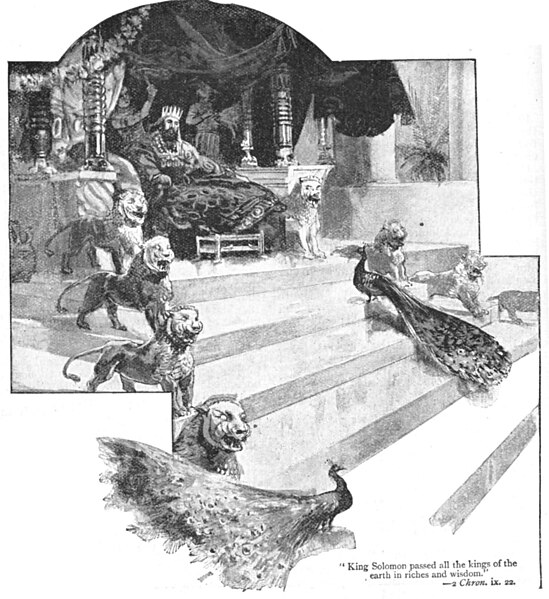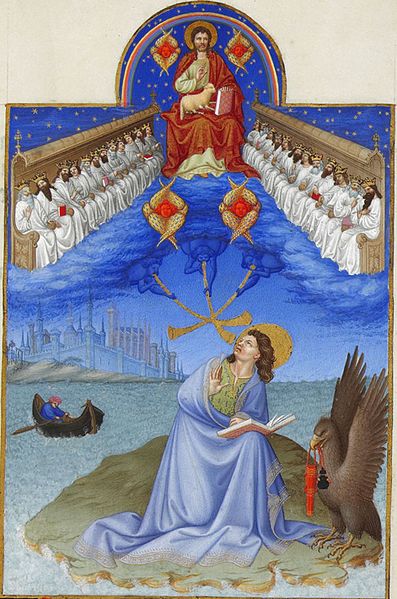A throne is the seat of state of a potentate or dignitary, especially the seat occupied by a sovereign on state occasions; or the seat occupied by a pope or bishop on ceremonial occasions. "Throne" in an abstract sense can also refer to the monarchy itself, an instance of metonymy, and is also used in many expressions such as "the power behind the throne".
Fanciful depiction of Solomon on his throne
Stone relief depicting Xerxes the Great seated on a throne
Vision of John of Patmos from the Book of Revelation (4:4)—four seraphim surround the throne of Christ, twenty-four elders sit on thrones to either side (Très Riches Heures du Duc de Berry)
Throne of the ecumenical patriarch of Constantinople in the Phanar, Istanbul. On the dais the Gospel is enthroned on a curule chair, in front of it, lower down is the patriarch's throne.
A baldachin, or baldaquin, is a canopy of state typically placed over an altar or throne. It had its beginnings as a cloth canopy, but in other cases it is a sturdy, permanent architectural feature, particularly over high altars in cathedrals, where such a structure is more correctly called a ciborium when it is sufficiently architectural in form. Baldachins are often supported on columns, especially when they are disconnected from an enclosing wall. A cloth of honour is a simpler cloth hanging vertically behind the throne, usually continuing to form a canopy. It can also be used for similar canopies in interior design, for example above beds, and for processional canopies used in formal state ceremonies such as coronations, held up by four or more men with poles attached to the corners of the cloth.
Marie Antoinette's bed, which has a baldachin, in the Petit Trianon (Versailles, France)
Enthroned Virgin Mary with cloth of honour by Hans Memling
State bed of Louis XIV of France, Chambre du Roi, Versailles
Bernini's "Baldacchino" in St Peter's, Vatican City








